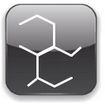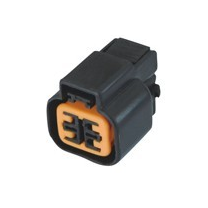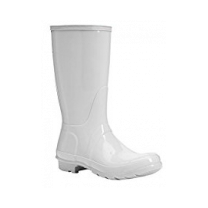SEPS
Thermoplastics > Styrenics
| SEPS elastomer | ||||||||
Products range | ||||||||
| SEPS copolymers styrene-ethylene-propylene-styrene In Mexpolimeros offer a vast range SEPS resin and their compounds developed according to their needs, guaranteeing the quality of products and service. Our product range includes gradescompounds SEPS block copolymers are available from 3 ÷ 70 Shore A to 70 Shore D. XPRENE EP it has been specifically formulated for molding one or two shots and develops a chemical bond when injection molded a variety of plastic substrates. XPRENE EP is divided into a wide range of products such as soft touch, expandable, high temperature resistant, low compression set, halogen FR and many other specialty categories. EP XPRENE thermoplastic elastomers are freely configurable flow. The EP XPRENE class consists of products that can replace natural rubber TPV (thermoplastic vulcanizate). |  | |||||||
| SEPS thermoplastic | ||||||||
The SEPS Styrene-ethylene-propylene-styrene, also known as Styrene-Ethylene / Propylene-Styrene (SEPS) Thermoplastic Elastomers , is a thermoplastic elastomer (TPE) that behaves like rubber without undergoing vulcanization. SEPS is very flexible, has excellent heat resistance and UV resistance and is easy to process. It is produced by partial selective hydrogenation of styrene-isoprene-styrene (SIS) one which improves thermal stability, weatherability and oil resistance, and makes the SEPS is sterilizable by steam. However, hydrogenation also reduces the mechanical efficiency and increases the cost of the polymer. SEPS elastomers are often blended with other polymers to improve their performance. Often, oil and fillers are added to a minor and / or to further modify the properties cost. They are used as impact modifiers for engineering thermoplastics as softeners / hardeners transparent polypropylene (PP). Other important applications include adhesives and sealants pressure sensitive hot melt. SEPS can also be used as a modifier for bitumen products such as paving and roofing applications roads. Adding SEPS reduces penetration, and temperature susceptibility increases the softening point and elastic recovery. |  | |||||||
| Molecular weight MW | ||||||||
It is available a wide range of products of high molecular weight grades with high and ultra-high and dynamic crosslinking degrees. Crosslinking occurs in the elastic midblock and endblock rigid, resulting in previously unattainable properties. Compared with standard grades of high molecular weight grades of very high molecular weight show better compression. Furthermore, in the manufacture of compounds, including process oil, low molecular weight can be used to maintain moderate rubbery properties, although the process oil high molecular weight is recommended for standard grades of high molecular weight. These advantages of the super high weight grades are more evident at higher temperatures. Improving the tensile strength of SEPS, to SEBS regard, also note in the compound PP polypropylene and oil. The SEPS elastomer has a higher resistance to ozone and a lower content of gels and better abrasion. Another hallmark of SEPSElastomer is your best ability to tratener the paraffinic oil, less evaporation and migration of oil compared to SEBS. This ability to tratener the paraffinic oil, refers to the maximum amount that can be absorbed without creating a separate oil phase. The viscoelastic properties of mixtures of paraffinic oils with SEPS pellets , change the content and molecular weight MW oil. | ||||||||
Symbols | ||||||||
| | |||||||
Properties | ||||||||
| ||||||||
| SEPS advantages over SEBS | ||||||||
|  | |||||||
Physical and mechanical properties | ||||||||
Elastomers of styrenic block copolymers SEPS polymers are among the most versatile and easy to process in the plastics material. The SEPS offers excellent surface friction coefficient, low permanent deformation, a tensile strength.While SEBS is a famous type hydrogenated styrenic thermoplastic elastomer in the market, SEPS is a more special grade type. Although it is a non - crystalline block rubber, SEPS exhibit improved tensile strength compared with SEBS SEPS and due to the development of crystallinity in stretching. Also compared with SEBS, SEPS has other advantages, such as improved retention properties oil, softer, higher affinity and better properties of polyethylene ad high temperature. SEPS thermoplastic resin may be applied to static purpose compared to SBS and has excellent performance rubber without vulcanization.It is well accepted that the viscoelasticity is an important factor determining the processing and final properties of these materials factor. Each block in these copolymers having a particular behavior relaxation causes its complex relaxation behavior. Block copolymers of polystyrene ABA type such as SBS, SEBS, processes exhibit fast and slow relaxation respectively. The first corresponds to the relaxation behavior of the hard block (PS), while the second shows the relaxation behavior of randomness. | ||||||||
SEPS Thermal properties | ||||||||
It is well known that the tensile strength and modulus of styrene- [ethylene- (ethylene-propylene)] - styrene block copolymer (SEPS) is greater than the styrene-butadiene-styrene block copolymer (SBS) and either automatic decomposition is beyond the glass transition temperature (Tg) of polystyrene (PS) or low extrinsic mechanical strength, due to the existence of a high energy intrinsic link substantially in its molecular structure. SEPS polymer blends have improved properties of aging, i ven after 1000 hours at 120 ° C, the compression assembly not annealed material is only 40%. To anneal at 120 ° C for 24 h, values can be further improved. The glass transition temperature (Tg) of the blockPoly (ethylene-co-propylene-ethylene) EP is typically -60 ° C, while the Tg of the polystyrene blocks is + 100 ° C. Therefore, at any temperature between -90 ° C and + 100 ° C, SEPS act as an elastomer physically crosslinked. Its Tg is -32 ° C ligermente higher than the SEBS -55 ° C, but respect to SEBS maintains better low temperature properties. The operating temperature is guaranteed from -30 ° C to + 100 ° C. Furthermore, high rubber elasticity at room temperature and the fluidity of the resin at high temperature are provided with SEPS larger than the linear SBS and star commonly used applications. | ||||||||
| SEPS Electrical properties | ||||||||
The SEPS are typically good insulators with high relative electrical resistivity being nonpolar polar best. However, the electrical properties of the compounds of EP XPRENE are more dependent on the ingredients used in the formulation of the elastomer base. We SEPS antistatic compound and still conductive by the incorporation of sufficient amounts of graphite, special types of carbon black, certain metal powders or polar products in the rubber mixture. However, the conductivity obtained by these means does not resemble that of metals. | ||||||||
| SEPS Optical properties | ||||||||
| One of the features of a two-phase system is that light is scattered when passing from one phase to another, resulting in different levels of transmission of light, in the case of granules SEPS, also have transparent degrees. | ||||||||
| SEPS Chemical resistance | ||||||||
| Unlike SBS, SEPS contains no double bonds (which by nature are sensitive to oxidation), which makes it particularly resistant to wear. Therefore, it is ideal for extreme conditions having to do with heat, ultraviolet radiation, ozone or oxidizing agents. The SEPS well resist stress crack (stress cracking) acid, hydroxides, methanol and ethanol, absorb oil, fats, aliphatic hydrocarbons. Instead they not resist polar hydrocarbons, aromatic hydrocarbons, carboxylic acid, gasoline, oil ASTM No 1 parafinado, ASTM # 3 oil Aromatic, toluene and benzene. | ||||||||
| SEPS Processability | ||||||||
The SEPS belong to the class of thermoplastic elastomers having the mechanical properties of rubber at room temperature and thermoplastic processing capabilities. The SEPS are rubbery without being crosslinked, so it is easy to process to achieve useful forms, usualente is processed more or less at 150-230 ° C. L os SEPS may have different characteristics, mainly highlighting its versatility for bi-injection molding or plastic materials. They can be processed with various methods such as injection molding, extrusion or blowing. In addition, XPRENE EP has been specially created for marketing demands and meet customer requirements.Normally they do not require drying, have broad processing latitude and have good to excellent thermal stability. procesaminto addition, SEPS can be processed as thermoplastics and excess material can maintain the mechanical and processing properties origin and can be used cyclically. The SEPS block copolymer exhibit behavior more particularly relaxation compared to conventional homopolymers. | ||||||||
| SEPS overmolding - 2K | ||||||||
Adhesion to a wide range of polar and nonpolar substrates such as PP, PA, ABS, PC, PS, SAN, ASA, PBT, PET, ABS / PC etc. also it has a very good adhesion to PE compared with SEBS and SEPS. For the selection process overmolding or 2K in certain TPEs can vary the strength of binding in the application, for example if the molding process is chosen for multi shot (multi-shot) compared to the insert molding, the first certain promotes increased binding strength or binding because the two materials melt joining state, while the latter gives a poor bond since one of the two materials (plastic) is superimposed on the other that is not cast (metal). So the selection processapplied is a key to produce a high quality factor. Within the choice of material depends on the company and product handling, where one has to consider the characteristics of each material for the application of overmolded, as there are a variety of materials having different properties that provide softness, texture, adhesion, and wall thickness of the material. For the effect of the thickness it is necessary to know the hardness of the material, for example when it has a TPE material with a low thickness (typically> 1mm) is perceived harder and vice versa when there is more than 1mm thickness will feel smooth.To ensure a good link overmolding their searches a thickness in the range 1.5mm for most applications overmolding. |  | |||||||
SEPS Polimerization | ||||||||
The SEPS copolymer is a block in polihidrogenado (styrene-b-isoprene / butadiene-b-styrene), also called triblock copolymers, is a high molecular weight elastomer is similar to SEBS. SEPS is produced by hydrogenation of styrene / 50 wt% butadiene / 50 wt% triblock copolymers, isoprene / styrene. The styrene content in this finished product MW varies to about 30%.Taking as an example SEBS (the most common commercial product), butadiene monomer can be polymerized through the 1,4 or 1,2 double bonds. For a segment chain elastic amorphous, should minimize the level of crystallinity present. In the case of SEPS, this is relatively easy since the hydrogenation of isoprene segment produces essentially an alternating sequence of ethylene and propylene with small regular lateral branches which inhibit crystallization of the chain. To SEBS, the case is more complex, since the polymerization can proceed through 1.4 and 1.2 double | ||||||||
| SEPS Compound | ||||||||
The products of class EP XPRENE formulated from SEPS , oil, polypropylene, additives, and some grades have reinforcements morphology continuous phase. Including a filler to a polymeric matrix can describe a compatibilization effect between immiscible or poorly miscible blends exhibit excellent and well electrical conductivity, hardness, stiffness, mechanical and thermal resistance, and even reach confer bactericidal properties to new material. Melt blending of polymers has been the fast track to the design of new resins that seek to combine the properties of SEPS and the PP, to reach the superiority of certain features because of the synergy that may occur. Unlike SBS, SEPS It contains no double bonds (which by nature are sensitive to oxidation), which makes it particularly resistant to wear. |  | |||||||
| SEPS good alternative PVC | ||||||||
However, there are two main drivers in the search for alternative PVC. First, plasticized PVC has an undesired related to the release of dioxins when incinerated uncontrolled environmental impact. Secondly, there is concern that plasticizers of PVC (called "estrogen mimics") can migrate to the human body. Potential alternative plasticized PVC tubes are polymer compositions containing polypropylene (PP) combined with a copolymer of elastomeric blocks. These compositions do not contain "estrogen mimics" or release dioxins when incinerated. SBCs are thermoplastic elastomers consisting of polystyrene end blocks (PS) chemically linked by a connecting rubber block PB. The rubber intermediate block consists most frequently PB polybutadiene, polyisoprene IR or hydrogenated versions poly-olefin: ethylene-butylene and ethylene-propylene SEPS. | ||||||||
| SEPS good alternative to PVC Industry Medica | ||||||||
A new family of hydrogenated SBC appears to be closing the performance gap with plasticized PVC. This family is based on midblock segment improved rubber (ERS), containing a higher content than more traditional butylene midblock SEBS. The benefits of ERS-SEBS polymers include improved processability and better compatibility with polypropylene. The fine network of ERS-SEBS mixture leads to a significant improvement in transparency. Another effect of improved compatibility with PP is a broadening of the glass transition temperature (Tg) below room temperature. The improved compatibility opens a number of properties of the material, which makes the SBC-PP mixtures are very suitable for replacement of plasticized PVC. Binding to these new materials can be challenging due to lack of bondable molecules along the polymer surface. A light curable adhesive provides high adhesion to all the various components. The high performance polymers are often selected for applications requiring retention of structural and dimensional integrity upon exposure to aggressive chemical conditions and high temperatures. One of these options is cost-effective performance polymers plasticized PVC. However, much attention has been paid to assessing polymers safer for the environment and biological. Gums styrene-ethylene-butylene-styrene (SEBS), SEBS blends / polypropylene, TPE (thermoplastic elastomers) and polypropylenes are emerging as alternative high performance. In particular, TPEs are used to replace plasticized PVC low durometer medical device applications where biocompatibility characteristics are crucial. However, the adhesive bond to these polymers can be a challenge.SEPS has been replacing the application of PVC in industries such as medical, pharmaceutical, adhesives and sealants, cables and wires, building materials, cosmetics and personal care, agriculture, packaging, footwear, furniture, clothing, toys, sports and electronic items. Using SEBS gadgets is increasing in the manufacture of medical devices, tubes and bags, as it is biocompatible and comparatively environmentally friendly than PVC. |  | |||||||
| SEPS Applications | ||||||||
Estos productos se utilizan principalmente en la construcción, además del calzado industrial, productos de la industria automotriz, etc. Las aplicaciones típicas son, perfiles, artículos para el hogar, las manijas, los cuchillos, las manijas, los accesorios, los pies, almacenamiento, inserciones antideslizantes, perillas, botones, sellos, perfiles, cubiertas de pedal, herramientas eléctricas, sellos para cables, enchufes y zócalos, revestimientos de cables, interruptores, cerramientos, herramientas de jardín, perillas, amortiguadores, aletas, máscaras, gorros, terminales, antideslizantes. SEPS ya se utiliza en la producción de juguetes y puede reemplazar el PVC para la producción de cabezas de muñecas (con pelo) utilizando técnicas de moldeo rotacional, una de las sustituciones de PVC más difíciles. El SEPS también se utiliza en la industria eléctrica para artículos tales como cables flexibles y puede reemplazar el PVC. Estas mezclas SEBS o SEPS se han modificado especialmente para la producción de piezas sobre-moldeadas por inyección duras / blandas mediante moldeo por inyección de dos componentes 2K. Dado que SEBS y SEPS no son polares, se debe realizar una modificación adecuada. SEPS se utiliza como una posible sustitución del PVC en la fabricación de juguetes. SEBS es similar al caucho natural y es menos peligroso en comparación con sus homólogos. Las aprobaciones de la FDA y BGW para la aplicación de SEPS pueden crear una oportunidad de crecimiento para el producto en el mercado global. Se utiliza un copolímero en bloque de alto peso molecular de estireno-etileno-etileno-propileno-estireno (SEPS), en 20 componentes elásticos de la estructura de los pañales. Se utliza para prepar geles (compuestos de gel para cojines, almohadillas de gel, etc.), adhesivos (Hot Melt, Solución), modificador para plásticos como Poliolefina, polímeros estenénicos, compatibilizante para aleaciones de polímeros, modificador para resinas termoestables. Este desarrollo avanzado de SEPS mantiene las características extremadamente suaves y similares al caucho, pero al mismo tiempo incorpora una mejoría en cuanto a la resistencia a la intemperie, la temperatura y química. SEPS es una interesante alternativa al TPV ya que cuenta con el mismo tipo de resistencia a la intemperie, amortiguadores, aletas, máscaras, gorros, terminales, antideslizantes y botas. El SEPS también se utiliza en la industria eléctrica para artículos tales como cables flexibles y puede reemplazar el PVC. En particular, los TPE se emplean para reemplazar el PVC plastificado de bajo durómetro en aplicaciones de dispositivos médicos, donde las características de biocompatibilidad son cruciales. Sin embargo, la unión adhesiva a estos polímeros puede ser un desafío. Los polímeros de alto rendimiento a menudo se seleccionan para aplicaciones que exigen la retención de integridad estructural y dimensional bajo la exposición a condiciones químicas agresivas y temperaturas elevadas. Una de estas opciones de polímeros de rendimiento rentable es el PVC plastificado. Sin embargo, se ha prestado mucha atención a la evaluación de polímeros más inocuos para el medio ambiente y biológicos. Las gomas de copolímero de estireno-etilenobutileno-estireno (SEBS), mezclas de SEBS / polipropileno, TPE (elastómeros termoplásticos) y polipropilenos están surgiendo como alternativas de alto rendimiento. | ||||||||





